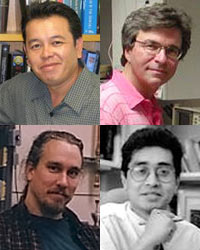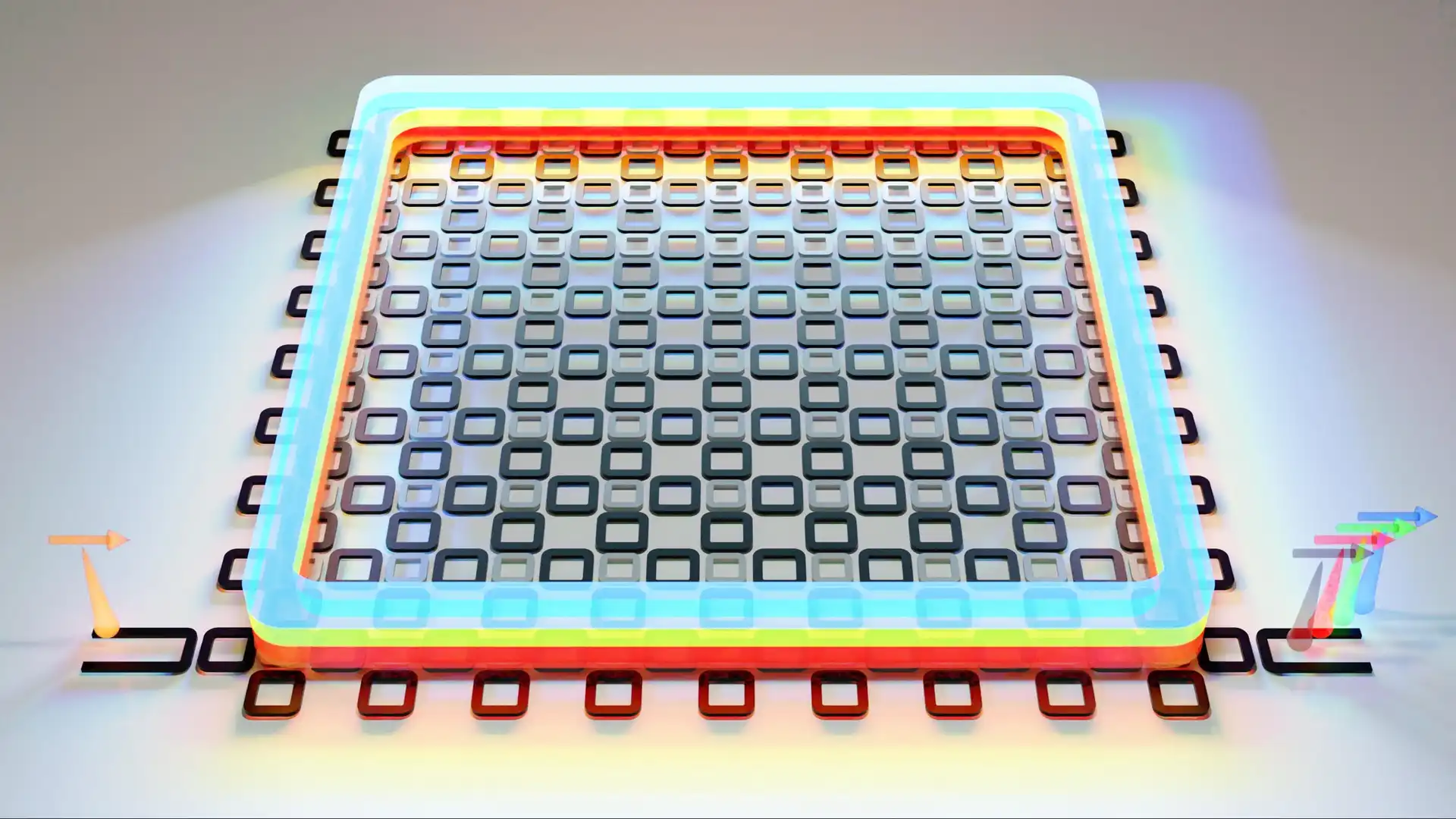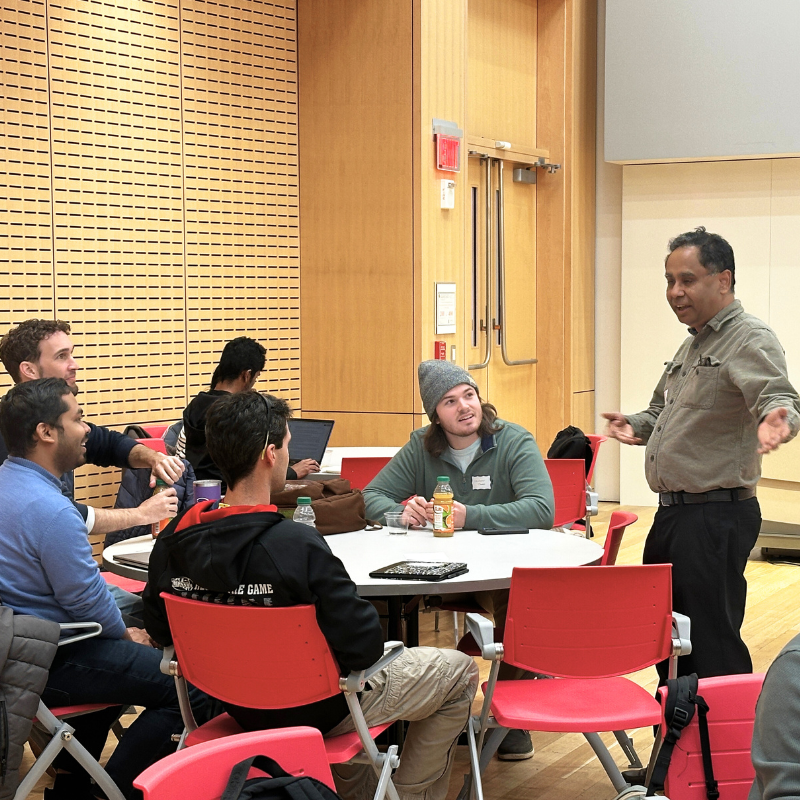News Story
Biosensors Group Obtains Collaborative NIH Contract for Cancer Research

Clockwise, from upper left: Dr. Mel Gomez, Dr. Neil Goldsman, Dr. Javed Khan, Dr. Michael Fuhrer
The goal of the research is to develop and optimize methods for screening large numbers of genes without having to perform the labor-intensive step of labeling the target with reporter molecules and other enzymatic reactions. The principal investigator for the project is Dr. R.D. (Mel) Gomez, professor of electrical and computer engineering at the A. James Clark School of Engineering.
One method being developed is to tether short (typically 25-nucleotide) single-stranded deoxyribo (DNA) or peptide (PNA) nucleic acid chains to the gate area of the transistor to act as bait for capturing nucleic acids with the complementary sequence. The transistor detects the increase in negative charge at the gate, which occurs when strands of DNA or RNA are captured through the Watson-Crick base pairing interaction. The technique is being optimized as an alternative technology for microarray gene expression experiments. While traditional methods use light or electrochemical reactions to detect hybridization in microarrays, the proposed technique uses electronic sensing which requires no additional chemical modifications or enzymatic reactions to implement. It is therefore faster, less complicated and more readily quantifiable.
The sensing transistors are based on carbon nanotubes (CNTs) rather than traditional silicon metal oxide field effect transistors (MOSFETs). The nanometer scale CNTs owe their high sensitivity to very large surface-to-volume ratios. The CNTFETs are custom designed and fabricated at the University of Maryland using the semiconductor fabrication facilities in the College of Engineering and Laboratory for Physical Sciences.
The outcome of the research project can pave the way towards detection of other biomolecules besides nucleic acid. DNA-like chains, known as aptamers, bind to amino acids, peptides, drugs and even cells. Using these as probes can significantly extend the utility of the sensors for medical screening, environmental testing, drug discovery and homeland security.
Published September 11, 2007









